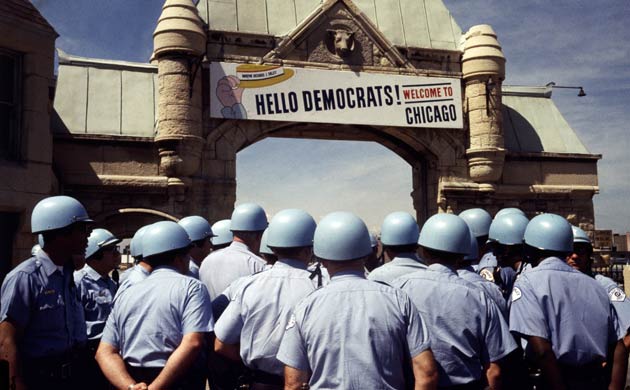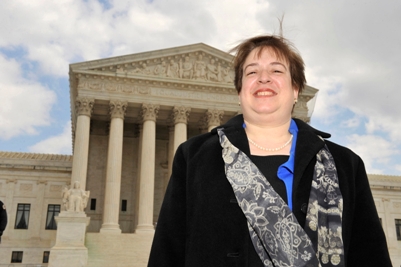 Hubert Humphrey was nominated by the Democratic Party for President at the Chicago convention on August 28, 1968.
Hubert Humphrey was nominated by the Democratic Party for President at the Chicago convention on August 28, 1968.On August 28, 1996, in a much calmer convention, Bill Clinton was re-nominated by the Democratic Party for a second term.

 Look at those two piece bathing suits -- and the ones that the women are wearing, too! And, of course, who doesn't enjoy smoking a pipe at the beach? For families and young couples alike, a beach party is a smart idea! Here's the recipe for the Riga Punch (and why not make a few thermos fulls, just in case):
Look at those two piece bathing suits -- and the ones that the women are wearing, too! And, of course, who doesn't enjoy smoking a pipe at the beach? For families and young couples alike, a beach party is a smart idea! Here's the recipe for the Riga Punch (and why not make a few thermos fulls, just in case): The photo may not very clearly depict the graphic, but the side of the glass features recipes for some classic drinks: a Martini, a Manhattan, a Bronx, a Daiquiri, and .... an Orange Blossom? Okay, the Bronx is a little obscure nowadays (as we have duly noted several times in prior happy hour discussions), but those other drinks are old standards. Why would an Orange Blossom be included in their company? Was the Orange Blossom a quiet favorite that everyone was gulping down 50 years ago, but never mentions anymore? Here's another piece of evidence we uncovered in an estate sale purchase:
The photo may not very clearly depict the graphic, but the side of the glass features recipes for some classic drinks: a Martini, a Manhattan, a Bronx, a Daiquiri, and .... an Orange Blossom? Okay, the Bronx is a little obscure nowadays (as we have duly noted several times in prior happy hour discussions), but those other drinks are old standards. Why would an Orange Blossom be included in their company? Was the Orange Blossom a quiet favorite that everyone was gulping down 50 years ago, but never mentions anymore? Here's another piece of evidence we uncovered in an estate sale purchase: This is a handwritten recipe that was tucked into a cocktail booklet we picked up at a sale. This was written down sometime in the 1950s, which we know because it's written on the reverse side of a time sheet from someone's job where they had to fill in the date, and the year was provided as "195___". So, some archaeological clues, we suppose. The fact that this person wrote out the specific recipe seems to indicate how important this drink was to them -- and the instructions ("shake till shaker gets frosty") offer a charming glimpse into this person's bartending technique.
This is a handwritten recipe that was tucked into a cocktail booklet we picked up at a sale. This was written down sometime in the 1950s, which we know because it's written on the reverse side of a time sheet from someone's job where they had to fill in the date, and the year was provided as "195___". So, some archaeological clues, we suppose. The fact that this person wrote out the specific recipe seems to indicate how important this drink was to them -- and the instructions ("shake till shaker gets frosty") offer a charming glimpse into this person's bartending technique. Another point that we need to discuss in relation to this drink is how much diversity there is in its ingredients. So far, we see that it, at minimum, takes orange juice and gin. The proportions of the gin and orange juice vary widely. Some recipes call for sugar to be added. The recipe on the side of the glass called for nutmeg. Here's a recipe from the 1964 edition of "Famous New Orleans Drinks And How to Mix 'Em":
Another point that we need to discuss in relation to this drink is how much diversity there is in its ingredients. So far, we see that it, at minimum, takes orange juice and gin. The proportions of the gin and orange juice vary widely. Some recipes call for sugar to be added. The recipe on the side of the glass called for nutmeg. Here's a recipe from the 1964 edition of "Famous New Orleans Drinks And How to Mix 'Em": Well, they kind of explain it there, don't they? To prove their point, here's the recipe from our 1933 edition of "The Drink Master":
Well, they kind of explain it there, don't they? To prove their point, here's the recipe from our 1933 edition of "The Drink Master": Instead of Peychaud's bitters, they call for Angostura bitters, and instead of sugar (or grenadine or honey), they call for maple syrup. Yeah, just like the topping for your pancakes. Oh, and be sure you don't miss the little detail that this recipe is supposed to serve two. We don't know about you, but not in our household!
Instead of Peychaud's bitters, they call for Angostura bitters, and instead of sugar (or grenadine or honey), they call for maple syrup. Yeah, just like the topping for your pancakes. Oh, and be sure you don't miss the little detail that this recipe is supposed to serve two. We don't know about you, but not in our household!  Hey, tough guy!
Hey, tough guy!
 The Brooklyn cocktail is a little more obscure than its neighbor from across the East River, but here's a recipe taken from the vintage repeal era 1933 edition of "The Drink Master":
The Brooklyn cocktail is a little more obscure than its neighbor from across the East River, but here's a recipe taken from the vintage repeal era 1933 edition of "The Drink Master": Just to pause and compare these two, the Brooklyn specifically calls for rye whiskey, whereas a Manhattan is often made with rye or with bourbon. Also, it's a lot like a "dry" Manhattan (where dry vermouth is substituted for the sweet vermouth), except that it includes a dash of maraschino liqueur, for a little bit of sweetness. It's a great drink, and should be revived.
Just to pause and compare these two, the Brooklyn specifically calls for rye whiskey, whereas a Manhattan is often made with rye or with bourbon. Also, it's a lot like a "dry" Manhattan (where dry vermouth is substituted for the sweet vermouth), except that it includes a dash of maraschino liqueur, for a little bit of sweetness. It's a great drink, and should be revived.
 To wrap up our tour of the boroughs, we land in Queens, home of Justice Antonin Scalia (incidentally, who is now the longest serving justice on the court)(and, just to toss this in for good measure: did you know that he and Justice Ginsberg are very close personal friends? Actually, before Justice Ginsberg's husband died, he and his wife, along with the Ginsbergs, would vacation together. So, go figure.) Here's a picture of him reviewing a precedent he's about to overrule in his conservative activism:
To wrap up our tour of the boroughs, we land in Queens, home of Justice Antonin Scalia (incidentally, who is now the longest serving justice on the court)(and, just to toss this in for good measure: did you know that he and Justice Ginsberg are very close personal friends? Actually, before Justice Ginsberg's husband died, he and his wife, along with the Ginsbergs, would vacation together. So, go figure.) Here's a picture of him reviewing a precedent he's about to overrule in his conservative activism: The Queens cocktail is by far the most obscure of our 4 featured specials. In fact, we don't have a recipe to draw upon, even from our vast archives of materials. But, with a little research on the internet, the Queens cocktail is basically a Bronx, except with pineapple juice instead of orange juice. You're on your own for the recipe, but we'll suggest maybe 2 oz gin, 1/2 oz sweet vermouth, 1/2 oz dry vermouth, and 1 oz pineapple juice. This is completely untested, so "buyer beware"! (please post any suggestions, of course)
The Queens cocktail is by far the most obscure of our 4 featured specials. In fact, we don't have a recipe to draw upon, even from our vast archives of materials. But, with a little research on the internet, the Queens cocktail is basically a Bronx, except with pineapple juice instead of orange juice. You're on your own for the recipe, but we'll suggest maybe 2 oz gin, 1/2 oz sweet vermouth, 1/2 oz dry vermouth, and 1 oz pineapple juice. This is completely untested, so "buyer beware"! (please post any suggestions, of course)